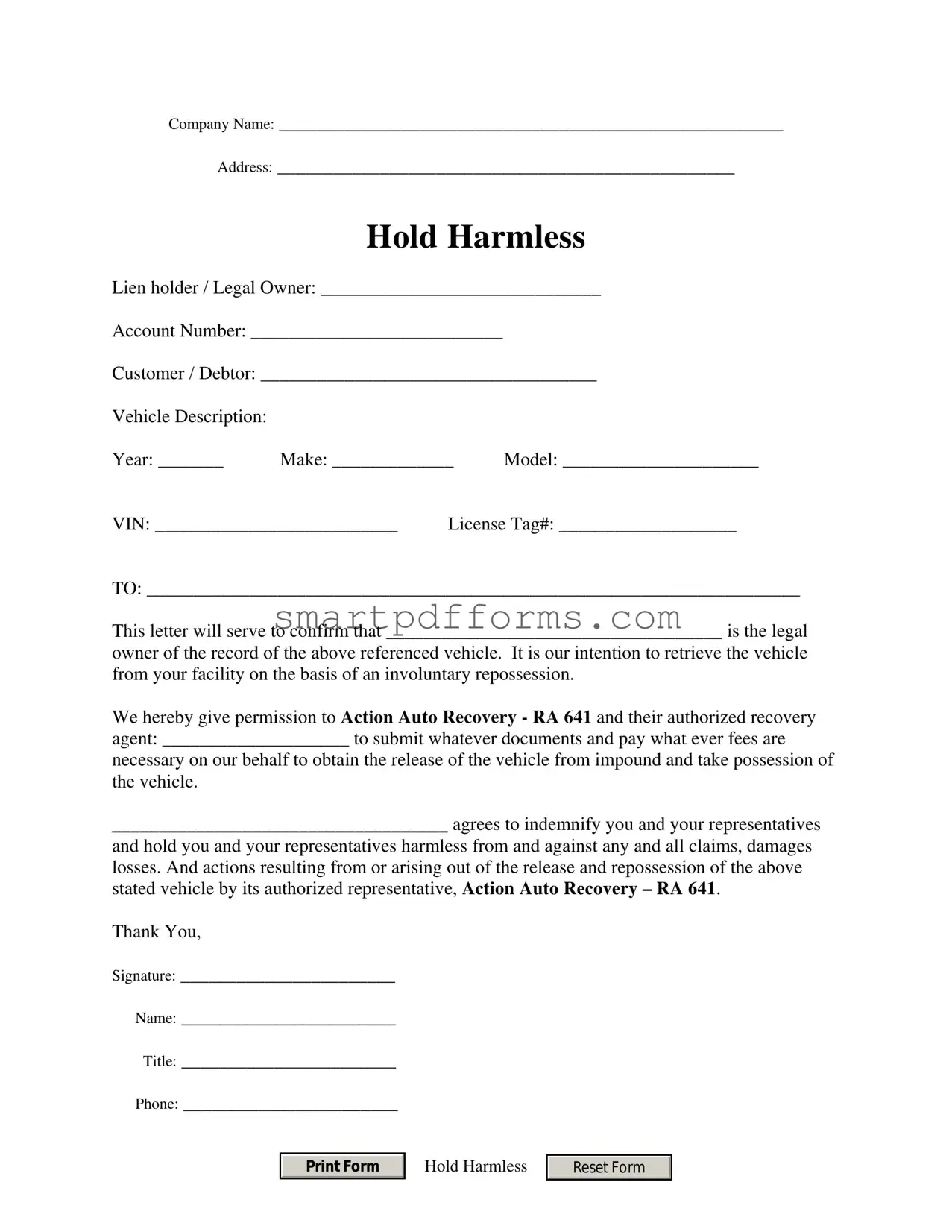In the often complex and sensitive realm of vehicle repossession, the Repo Order form stands as a critical document designed to streamline the process for all parties involved. It meticulously outlines the necessary information, starting with the company's name and address, and extending to intricate details about the legal owner, account number, and the debtor. The form also delves into specifics regarding the vehicle in question, including its year, make, model, VIN, and license tag number, ensuring there's no ambiguity about the asset being reclaimed. Crucially, the form authorizes Action Auto Recovery - RA 641 and their designated recovery agent to engage with various entities, from impound facilities to police departments, to facilitate the vehicle's release and repossession. It contains a robust ‘Hold Harmless’ clause that protects involved parties from potential claims or damages arising during the repossession process. Additionally, the form's adaptability is highlighted in instructions that permit its reuse for separate hold harmless agreements with both police and tow yards, significantly reducing administrative burdens. Instructions for completing, signing, and submitting the form, along with contact details for further assistance, encapsulate the document's user-centric design, making it an invaluable tool for legal owners embarking on the vehicle repossession journey.

